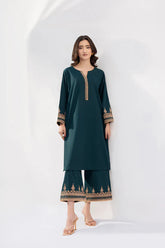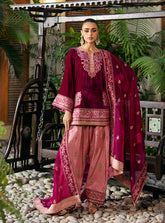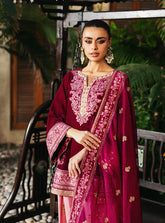Bridal Dresses in Pakistan | A Celebration of Tradition and Elegance
Pakistan is a country rich in cultural heritage, and this is vividly reflected in its traditional wedding attire. Pakistani bridal dresses are known for their intricate designs, luxurious fabrics, and the timeless elegance they embody.
Every region in Pakistan offers its own unique bridal fashion, with styles that have been passed down through generations, yet continually evolve to reflect contemporary trends.
A Blend of Tradition and Modernity
Pakistani weddings are grand affairs that last several days, with each event requiring a different outfit for the bride. Traditional Pakistani bridal attire is characterized by its use of vibrant colors, heavy embellishments, and luxurious fabrics like silk, chiffon, organza, and velvet.
Despite the growing influence of modern trends, many brides still opt for traditional designs such as the lehenga choli, sharara, and gharara. These outfits are often paired with long, flowing dupattas (scarves), heavily embroidered and adorned with gold or silver thread, sequins, pearls, and crystals.
At the same time, contemporary brides in Pakistan often choose to incorporate modern elements into their bridal attire. Designers now offer fusion pieces that blend traditional silhouettes with modern cuts and lighter fabrics, catering to brides who want the best of both worlds.
Popular Bridal Dress Styles

-
Lehenga Choli:
- The lehenga choli is one of the most popular bridal outfits in Pakistan. It consists of a long, flared skirt (lehenga) paired with a fitted blouse (choli) and is usually accompanied by a heavily embroidered dupatta. Traditional colors like red, maroon, and gold are commonly used, symbolizing prosperity, love, and fertility.
-
Sharara:
- The sharara is another traditional bridal outfit, known for its wide-legged pants that resemble a skirt. It is usually paired with a long tunic and dupatta, and it is heavily embellished with zari, gota work, and intricate embroidery. Shararas offer a dramatic, regal look, often favored for the baraat (wedding ceremony) or nikah (Islamic wedding contract signing).
-
Gharara:
- Similar to the sharara, the gharara features flared pants but with a distinctive, pleated flare starting at the knee. It is paired with a long kameez or blouse and a dupatta. This style is particularly popular in regions like Punjab and has been a staple of bridal fashion for decades.
-
Maxi Gowns and Anarkali:
- For brides who want a more modern yet modest look, maxi gowns and Anarkali dresses are gaining popularity. These dresses are long, flowy, and often feature stunning embroidery or intricate patterns. The Anarkali is characterized by its fitted bodice and flared skirt, creating a graceful and elegant silhouette.
- These styles are perfect for a reception or valima (post-wedding reception), where brides can opt for pastel colors and softer embellishments.
-
Farshi Pajama:
- The farshi pajama is an old-world style that has made a comeback in recent years. It consists of a long, flowing skirt or wide-legged trousers paired with a knee-length or floor-length kameez. The farshi pajama is usually made from luxurious fabrics like silk or velvet and is adorned with heavy embroidery and embellishments.
The Role of Color in Pakistani Bridal Dresses
In Pakistani weddings, colors hold significant cultural and emotional value. Traditionally, the color red is the most favored choice for bridal dresses as it symbolizes love, passion, and prosperity.
For the mehndi (henna ceremony), brides typically wear vibrant hues like yellow, orange, and green to reflect the festive and joyous nature of the event. The walima (reception) is where softer, more neutral colors like pastels, silver, and gold are commonly seen, giving the bride a fresh and elegant look.
The Influence of Pakistani Designers
Pakistani bridal fashion is renowned for its designers who create stunning, handcrafted pieces that cater to modern brides while staying rooted in tradition. Designers like HSY, Bunto Kazmi, Sana Safinaz, Asim Jofa, and Nomi Ansari are celebrated for their exquisite bridal collections that often feature a blend of traditional embroidery techniques with contemporary cuts.
These designers use luxurious fabrics and intricate hand-embroidery to create unique bridal pieces that cater to a wide range of preferences. Whether a bride wants a traditional, heavily embroidered lehenga or a modern, understated gown, Pakistani designers offer a wide variety of options for every bride.
Conclusion
The bridal dress is one of the most important aspects of a Pakistani wedding, symbolizing not just the bride’s beauty but also her cultural heritage and family traditions. Whether a bride opts for a traditional look or chooses to embrace modern trends, the bridal dress is a reflection of her personal style and the rich traditions of Pakistani weddings. With so many stunning options to choose from, bridal dress in Pakistan continues to evolve, offering brides endless possibilities to look and feel their best on their special day





